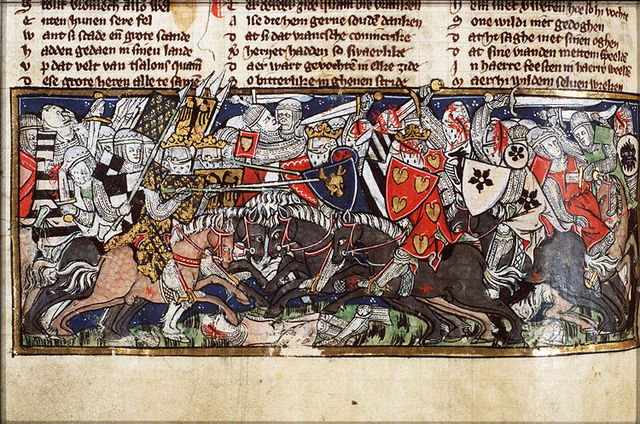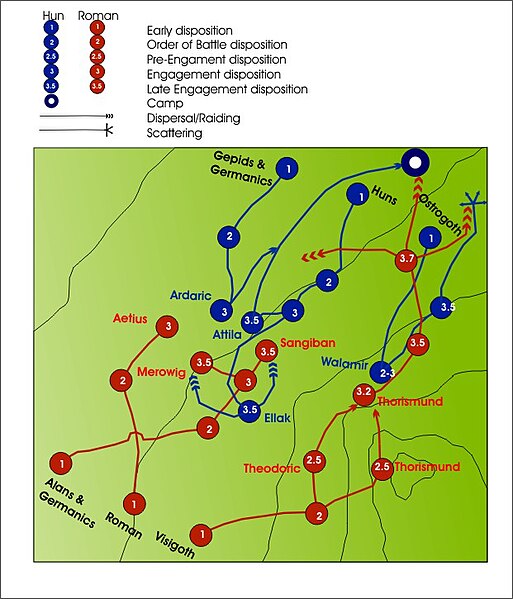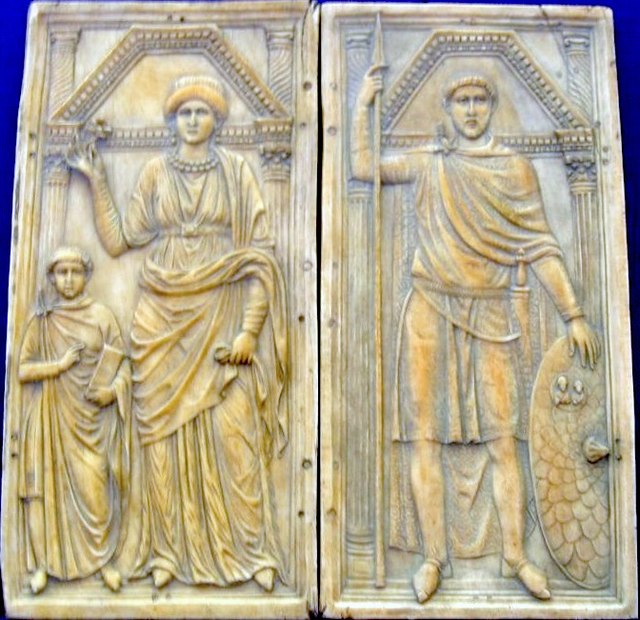Battle of the Catalaunian Plains
The Battle of the Catalaunian Plains, also called the Battle of the Campus Mauriacus, Battle of Châlons, Battle of Troyes or the Battle of Maurica, took place on June 20, 451 AD, between a coalition, led by the Roman general Flavius Aetius and the Visigothic king Theodoric I, against the Huns and their vassals, commanded by their king, Attila. It proved one of the last major military operations of the Western Roman Empire, although Germanic foederati composed the majority of the coalition army. Whether the battle was of strategic significance is disputed; historians generally agree that the siege of Aurelianum was the decisive moment in the campaign and stopped the Huns' attempt to advance any further into Roman territory or establish vassals in Roman Gaul. However, the Huns successfully looted and pillaged much of Gaul and crippled the military capacity of the Romans and Visigoths. Attila died only two years later, in 453; after the Battle of Nedao in 454 AD, the coalition of the Huns and the incorporated Germanic vassals gradually disintegrated.

An anachronistic illustration of the Battle of the Catalaunian Plains depicting its combatants as armoured knights, from Jacob van Maerlant's Spieghel Historiael
Course of the battle
The Battle of the Catalaunian Plains as depicted in the Chronica Hungarorum
Flavius Aetius (magister militum)
Flavius Aetius was a Roman general and statesman of the closing period of the Western Roman Empire. He was a military commander and the most influential man in the Empire for two decades (433–454). He managed policy in regard to the attacks of barbarian federates settled throughout the West. Notably, he mustered a large Roman and allied (foederati) army in the Battle of the Catalaunian Plains, ending a devastating invasion of Gaul by Attila in 451, though the Hun and his subjugated allies still managed to invade Italy the following year, an incursion best remembered for the ruthless Sack of Aquileia and the intercession of Pope Leo I.
Possible relief of Aetius, although this Sarcophagus has also been thought to depict Stilicho (d. 408 AD), and can be dated even earlier (between 387–390 AD), during the reign of Theodosius I
Coin of Bonifacius Comes Africae (422–431 CE).
The Monza Cathedral Diptych, which may have been commissioned on Aetius' first consulship. It may also depict Stilicho.






